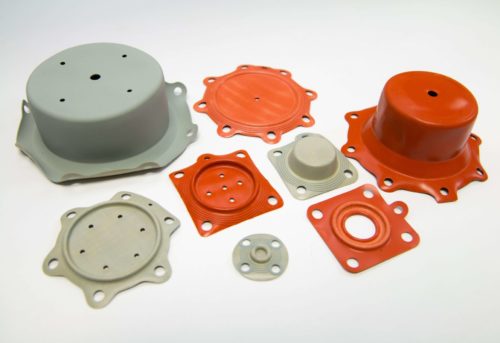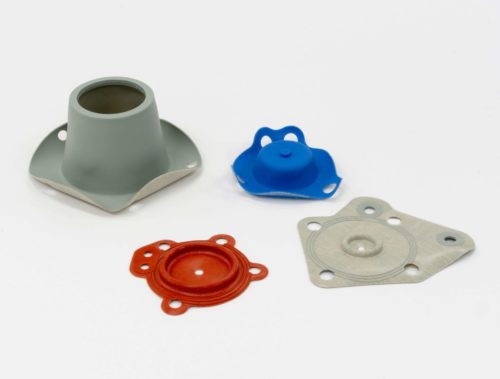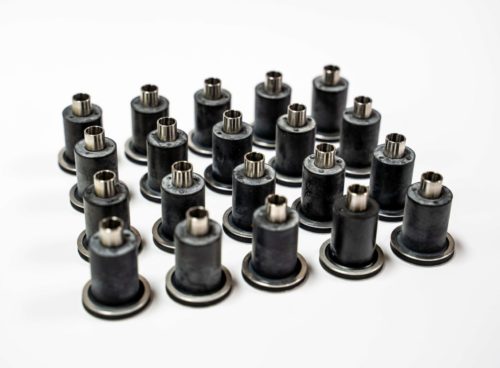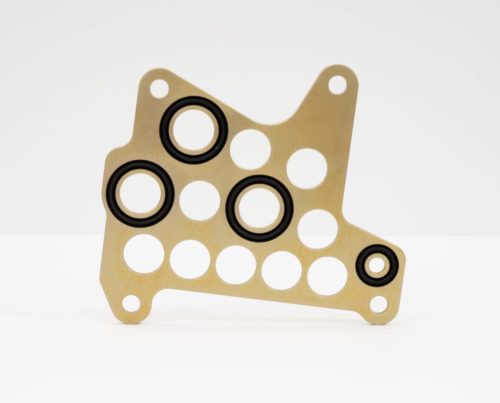Choosing the Right Elastomer for Your Project
Choosing the Right Elastomer for Your Project
Elastomer products are everywhere in our modern lives—from the soles of our shoes to the critical sealing surfaces on the aircraft you fly on, elastomers (sometimes referred to as rubber) make the world go round.
But despite the prevalence of this viscoelastic polymer, information about it is difficult to find. There are many elastomers to choose from—each with unique properties and price points—which complicates matters even further. Engineers who are new to designing elastomer products may have a hard time making an informed decision about which elastomer to use.
For instance, if you’re designing a component for an aircraft that flies through sub-zero temperatures but also sits on hot tarmacs in the sun, you’ll need an elastomer for your custom molded rubber seals that can withstand extreme temperatures. If you’re designing a part for a fuel or hydraulic system, you’ll need an oil and fuel resistant elastomer.
Even material stiffness varies significantly. Elastomer materials can be stiff and strong like bowling balls, while others are soft and flexible, with a texture more like chewing gum.
To help make material selection easier, our team of experts at Micro-Tronics created a resource guide spotlighting 20 common elastomers. Learn the thermal properties, environmental and fluid resistances, and tensile strengths of each one.
Elastomer Spotlight: Silicone, Nitrile, and Fluoroelastomer
Silicone: Taking on Extreme Temperatures
If you’re designing a rubber part that will need to withstand extreme temperatures, silicone could be the best option. With a temperature range spanning -120 to 500 degrees Fahrenheit, silicone is great for aerospace parts and transportation vehicles that most function in intense climates.
Silicone has outstanding environmental and water resistant properties, and it’s capable of sustaining exposure to UV rays and inclement weather. This material can even handle deep sub-zero temperatures without becoming brittle and breaking. But if you’re on a tight budget, know that silicone isn’t the cheapest option.
Nitrile: Outstanding Oil, Fluid, and Wear Resistance
If you’re familiar with elastomers, you might know nitrile as NBR or Buna N.
Today nitrile is commonly used in the transportation and automotive industries because of its outstanding oil, fluid, and wear-resistant properties. Nitrile is particularly good at resisting petroleum-based oils, making it a prime candidate for seals in cars.
This material can stand up to industrial applications and it’s more economical than silicone. Keep in mind, however, that the more specialized your project, the more material can get more expensive as the requirements increase. For example, if you need a hydrogenated nitrile that can sustain a wider range of temperatures and has better wear capabilities, your cost may increase upwards into the range of some silicones.
Fluoroelastomer: An Evolved Product for High-Performance Builds
Fluoroelastomer serves many of the same needs as nitrile, but it’s an evolved product and can sustain much higher temperatures. Where nitrile tops out at 250 degrees Fahrenheit, fluoroelastomer can withstand up to 500 degrees Fahrenheit. It can also survive in cold climates with brittle points down to -40 degrees Fahrenheit.
This oil- and fuel-resistant material is ideal for high-performance engines in automobiles and a great choice for aerospace product designs. One thing engineers love about fluoroelastomer is that it can be tailored to suit application requirements. We often recommend specialty variants of fluoroelastomer for aerospace customers who need additional low-temperature properties.
Whatever you’re creating, there’s an elastomer that will fit your specifications. With 35+ years of experience working with elastomers, our team at Micro-Tronics can help your team identify the best custom molded rubber for your application.
To get started, download our guide to see which material will best fit your needs. When you’re ready to request a quote, our experts will be here, ready to help you bring your elastomer product to life.








